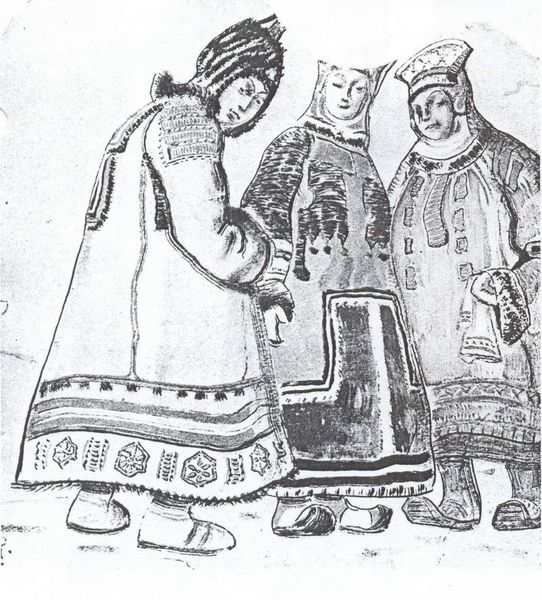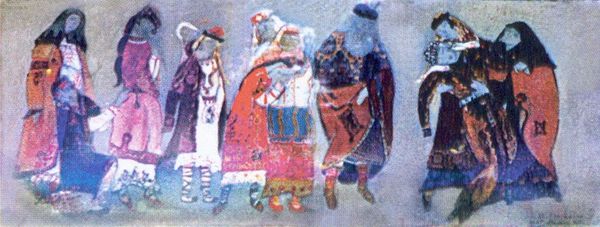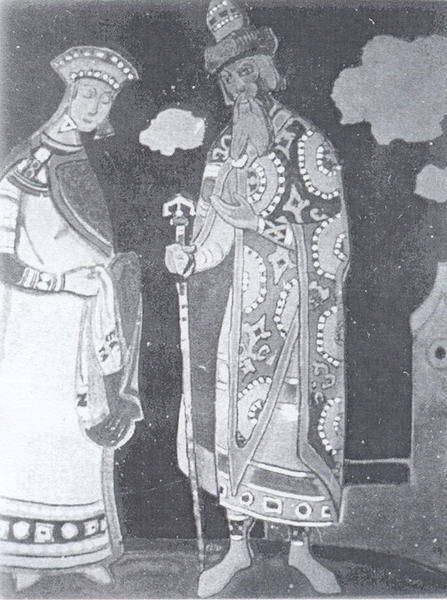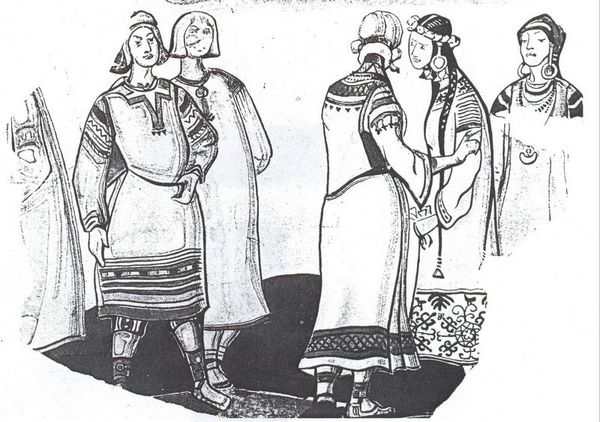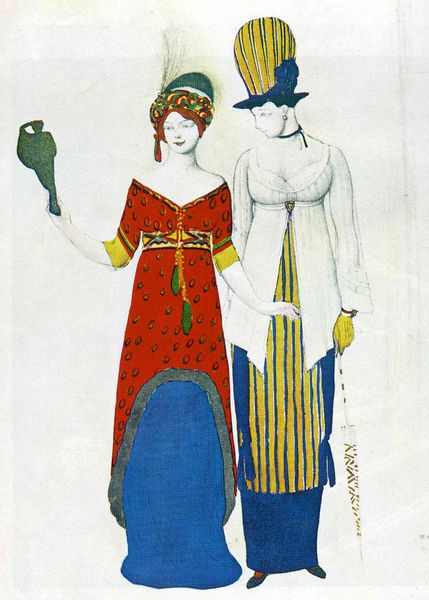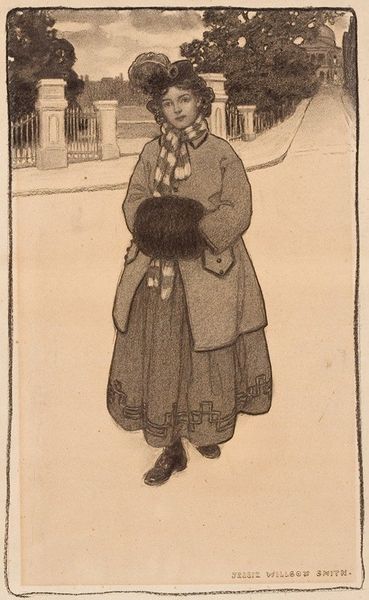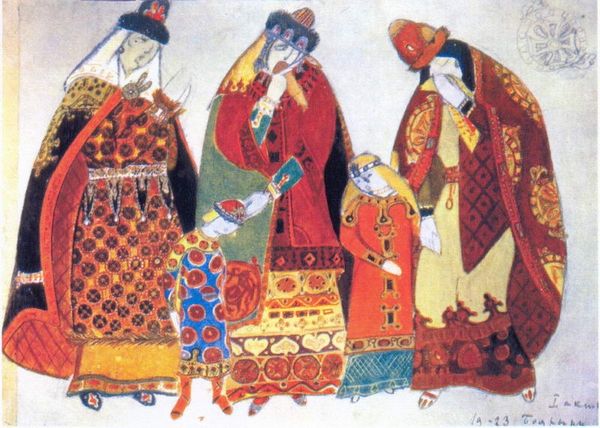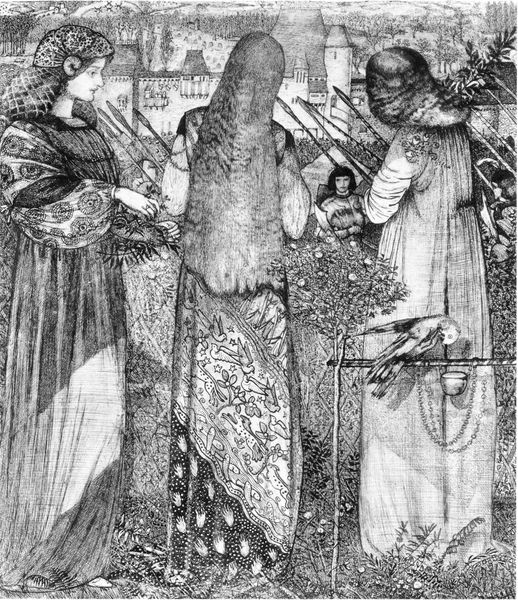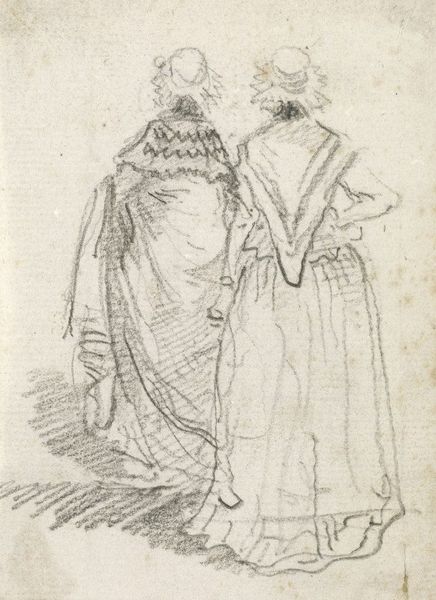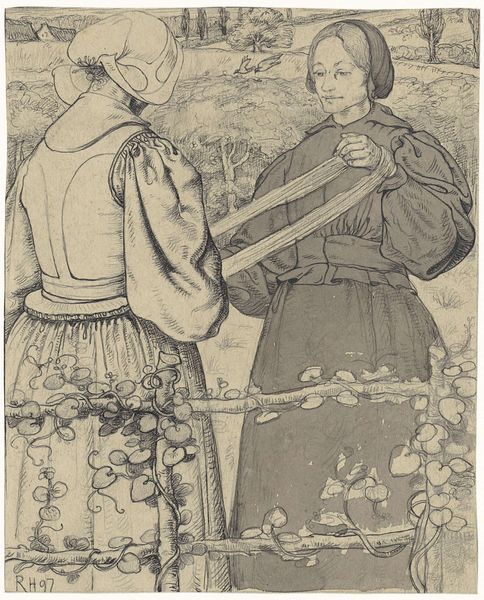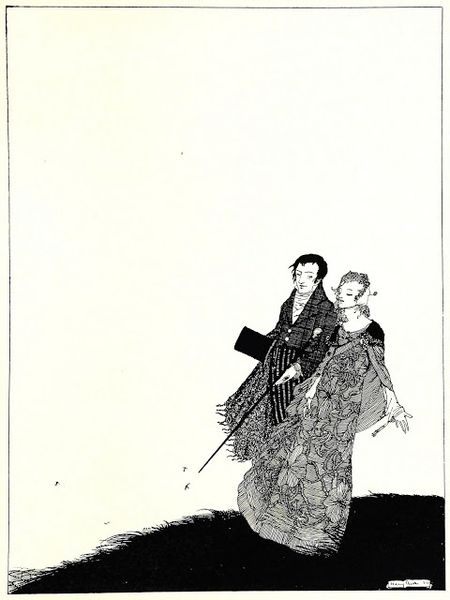
Copyright: Public domain
Curator: What a compelling artwork! Here we have Nicholas Roerich's "Boyarin and Boyarynia," created in 1921 using charcoal and pencil. Editor: It strikes me immediately with its somber mood. The limited palette and sketch-like quality create an atmosphere of starkness and restraint. There’s a tension in the angularity of the figures and their somewhat flattened depiction. Curator: Absolutely. And what's fascinating is the choice of materials in relation to the subject matter. Charcoal and pencil, readily available and inexpensive, speak to the conditions of artistic production during a period of upheaval. Roerich, although associated with symbolism, rooted this image in very tangible economic and social realities. This piece emerges at a pivotal moment, reflecting perhaps the shift of the Russian avant-garde away from pure abstraction and towards representation. Editor: I agree that the social context cannot be ignored. Yet the composition itself also dictates the tone. Notice how the figures, seemingly a nobleman and noblewoman, are presented not in isolation, but within a landscape—although a highly simplified one, defined by stark lines that delineate buildings and perhaps suggest a sense of confinement. The costumes too, rendered with a kind of rough precision, emphasize form over detail. Curator: Indeed, we must remember that costumes speak to identity, and in this instance, to a privileged class. Roerich gives us a window into a specific socio-economic bracket, yet presents them within a context of simplification bordering on the generic. It raises questions of who gets to be represented and how those representations get constructed. The materiality of the image becomes central to understanding its message. Editor: True. But the medium's simplicity, far from diminishing, heightens the formal impact. Look at the expressive contrast between the densely worked areas and the almost untouched paper. The selective use of chiaroscuro concentrates our gaze, drawing attention to particular areas. It's a brilliant example of how restraint can amplify visual impact. Curator: This artwork prompts me to think about the intersection between artistic choices, economic conditions, and the act of portraying identity during a revolutionary time. It reflects on class, representation, and the labor involved in the artistic process itself. Editor: For me, this work beautifully encapsulates the emotional potency inherent in simple materials handled with precision. The artist uses limited means to conjure a powerful sense of time and place.
Comments
No comments
Be the first to comment and join the conversation on the ultimate creative platform.
